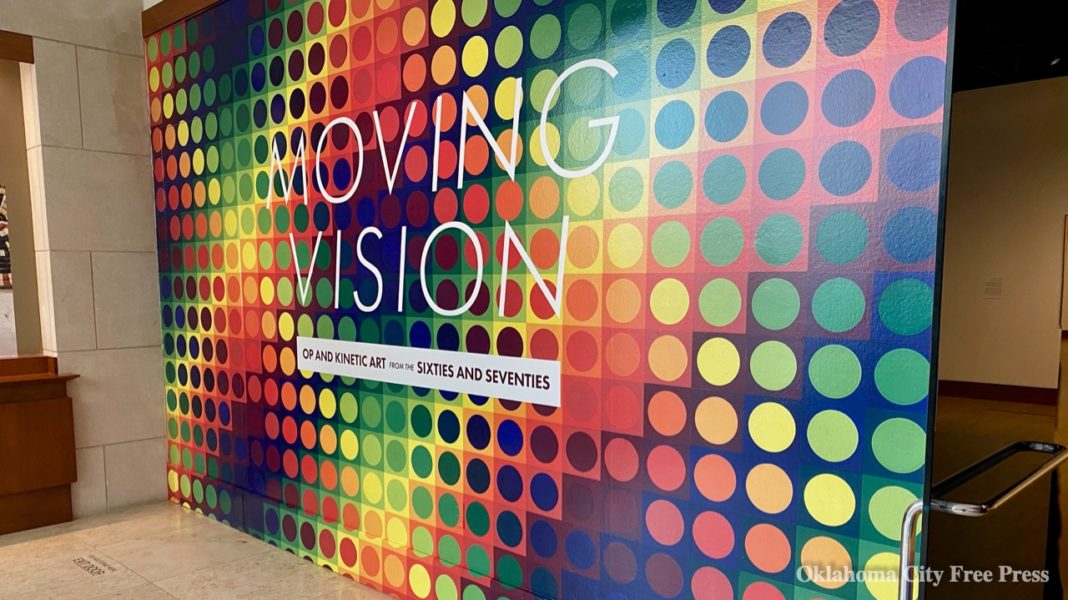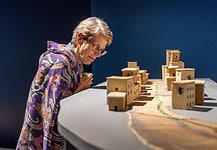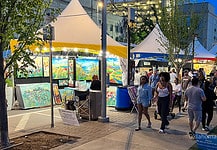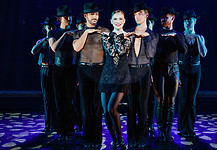Last Updated on March 1, 2021, 12:22 PM | Published: February 28, 2021
Since the classical age of Greek civilization, artists have labored to give their viewers the illusion of motion.
In Moving Vision: Op and Kinetic Art from the Sixties and Seventies, an exhibition launched February 20 by the Oklahoma City Museum of Art, that fundamental skill and goal of art is revisited in a profoundly contemporary medium, the optical and kinetic art movements of the 1960s and 70s.
Moving Vision arrives as the Museum prepares for its 75th birthday, marking the maturity of Oklahoma City’s oldest and most venerable institution of art.

Moving Vision is an exhibition devoted to the growing interest of artists in optical illusions and moving art pieces during the 60’s and 70’s. Much of this interest, as the museum placards readily acknowledge, stemmed from a flood of German post-war influence.
The Bauhaus movement was influential in creating a wave of art which is responsible for a great deal of our modern architecture and dedicates itself to the doctrine that “form follows function.”
But what is particularly exciting about Moving Vision is that you don’t need to know any of that.
As Catherine Shotick, curator at the Museum of Art, explains, “Most Op art is based on simple geometric forms, the interaction between bold and bright colors, and light and shadow to create their visual effects, and these visual effects are universal, whether you have had 10 courses in art history or none.” This, of course, is a wonderful forum for adults and children to engage in art that is accessible regardless of their knowledge of history, art, or theory.

The pieces of Moving Vision provide a unique opportunity to explore the underlying motivations of line, color, and geometry without the distraction of a subject matter. There are no dramas playing out across the canvas, nor any tragedy molded out of marble. Instead, artists are embarking on a study, of which the viewer is an intimate part.
The subject of the exhibition “leads us to understand more about our eyes and how we see the world,” says Dr. Najafi, curator of the exhibition, and “helps us understand the difference between ‘looking’ and ‘seeing.’” In this way, the reactions of the visitors, from dizziness to near hypnosis, are behaviors the artists are fascinated by, and seek to understand the reason these reactions occur.
Many of the pieces displayed present an intriguing challenge to the artists of today. “Op and Kinetic artists offered us some of the most quintessential expressions of modern art’s concern with presenting rather than representing reality,” as guest curator Roja Najafi explains.
And one of the key concerns of modern art is, of course, pushing the boundaries of what can be considered art.
Many pieces incorporate “the look of computer graphics and various high-tech imaging techniques,” manifesting a sort of Space Age dimension of aesthetic that stays with us in the digital era. Other pieces are bold with their choice of material, a key ingredient of modern’s art’s mission to challenge artistic preconceptions.
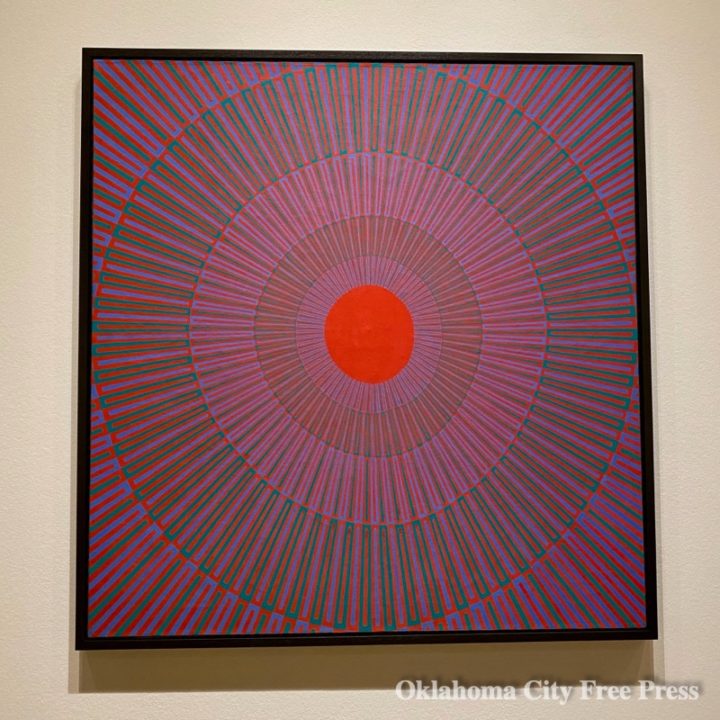
Shotick explains how to the op and kinetic art movement made use of the increasingly available plastic. “Plastics as a medium can be very attractive to artists because it is stable and strong but can be molded and shaped with relatively low heat.” Plastics presented a new frontier for optical and kinetic artists to explore the question of “what is art?” and are “one example of artists pushing the boundaries surrounding this question in the 1960s and 70s.”
The use of these illusions is of course nothing new to art.
Leonardo da Vinci made great use of illusory tactics in the famed Mona Lisa. Modern architects also seek to dazzle and display through clever use of geometry and color. This central tenet of the artistic discipline is therefore an incredibly important tool for all artists.
With the city’s development into a regional hub of creativity, Oklahoma City’s artists and residents are well-served by a visit to its oldest home of the arts.
In exhibiting the illusion of motion at its most basic and essential structure in Moving Vision, the Oklahoma City Museum of Art provides artists and visitors a chance to revisit the core ideas of art, learn from them, and supply the world with fresh and exciting perspectives on the shape and color of the human experience.
Moving Vision is open until May 16. The Oklahoma City Museum of Art requires masks. Capacity is limited, and timed tickets can be bought online or at the box office.
Devraat Awasthi is an art reporter for Free Press, a full-time law student at the University of Oklahoma, and is interested in pop culture’s role in public communities.
